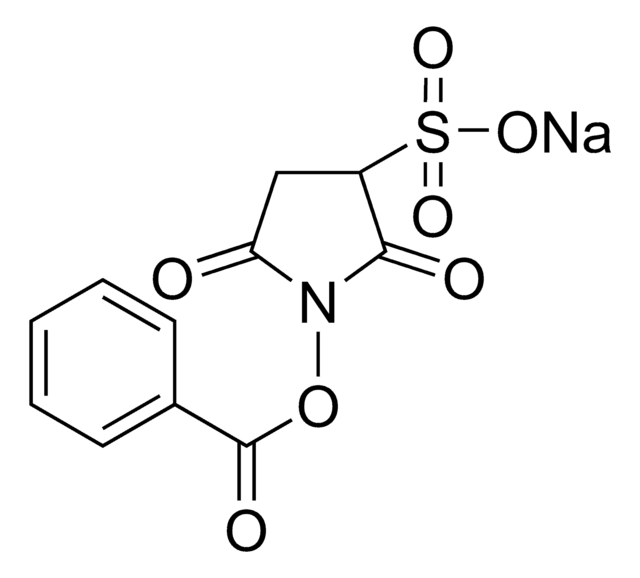56485
N-Hydroxysulfosuccinimide sodium salt
≥98% (HPLC), for peptide synthesis
Synonym(s):
Hydroxy-2,5-dioxopyrrolidine-3-sulfonicacid sodium salt, Sulfo-NHS
About This Item
Recommended Products
product name
N-Hydroxysulfosuccinimide sodium salt, ≥98% (HPLC)
Quality Level
Assay
≥98% (HPLC)
form
powder
composition
carbon, 21.57-22.68 (anhydrous)
nitrogen, 6.28-6.61 (anhydrous)
reaction suitability
reaction type: Addition Reactions
impurities
≤4% water
application(s)
peptide synthesis
SMILES string
[Na+].ON1C(=O)CC(C1=O)S([O-])(=O)=O
InChI
1S/C4H5NO6S.Na/c6-3-1-2(12(9,10)11)4(7)5(3)8;/h2,8H,1H2,(H,9,10,11);/q;+1/p-1
InChI key
RPENMORRBUTCPR-UHFFFAOYSA-M
Looking for similar products? Visit Product Comparison Guide
Application
Packaging
Other Notes
Storage Class Code
11 - Combustible Solids
WGK
WGK 3
Flash Point(F)
Not applicable
Flash Point(C)
Not applicable
Personal Protective Equipment
Choose from one of the most recent versions:
Already Own This Product?
Find documentation for the products that you have recently purchased in the Document Library.
Customers Also Viewed
Articles
Collagen molecules play a critical role in tissue architecture and strength, and in cell-matrix interactions as insoluble ligands to regulate the diverse phenotypic activities of cells.
Our team of scientists has experience in all areas of research including Life Science, Material Science, Chemical Synthesis, Chromatography, Analytical and many others.
Contact Technical Service






![1-[3-(Dimethylamino)propyl]-3-ethylcarbodiimide methiodide](/deepweb/assets/sigmaaldrich/product/structures/414/134/4eb9c126-d7f9-4e12-9e3a-95cb077824fd/640/4eb9c126-d7f9-4e12-9e3a-95cb077824fd.png)
